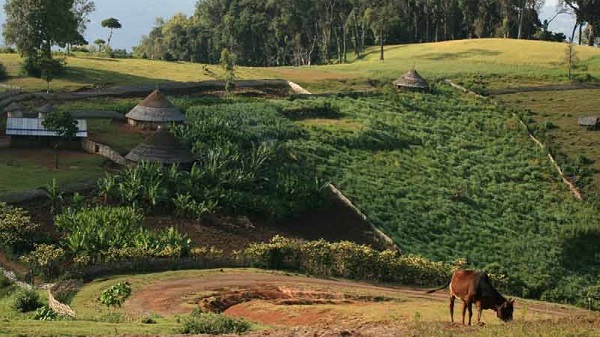
The Bonga Forest Reserve, which covers some 500 square kilometers, is among the last remaining subtropical moist forests of any significant size found in Ethiopia.
By James Jeffrey (CNN)
Bonga is a name rarely encountered when visiting Ethiopia, if at all. But it deserves to be better known: it’s said to be the very birthplace of Arabica coffee.
Despite its caffeinated claim, the multibillion dollar global industry that has grown up around coffee has passed Bonga by.
Today, this little town hidden away deep in southwestern Ethiopia sits quietly in unspoiled subtropical cloud forests brimming with coffee trees, wild honey, natural wonders and wildlife.
The term coffee is said to derive from Kaffa, the ancient name for the part of the present-day Southern Nations, Nationalities and Peoples’ State region in which Bonga lies.
The story goes that sometime around the sixth century in forests near Bonga, a goatherd named Kaldi spotted his animals getting frisky after eating red berries from a shrub he’d never seen before.
So Kaldi gave the berries a try himself and the coffee bean was discovered.
Early morning starts, dull office meetings and weak excuses for prolonging hot dates would never be the same again.
An early morning in Bonga finds the town’s slopes enveloped in low-lying clouds caused by the air’s characteristically high moisture content.
The effect is impressively cinematic as households come to life, their chimneys releasing narrow columns of cooking smoke that rise into the surrounding mist.
Coffee in the clouds
The Bonga Forest Reserve, which covers some 500 square kilometers, is among the last remaining subtropical moist forests of any significant size found in Ethiopia.
Its elevation is perfect for coffee, which best grows between 900 and 1,800 meters (2,950 to 5,900 feet).
The shade provided by forest trees means the beans develop slower, becoming more dense and flavorful as a result.
It also keeps the trees shorter, so they’re more easily handpicked by locals.
Mirutse Habtemariam, a local beekeeper, is on hand to impart a crash course on other foods of the forests.
He points to forest cardamom (the most expensive spice in Ethiopia) and long green peppers that sprout among shrubs beside dirt tracks.
